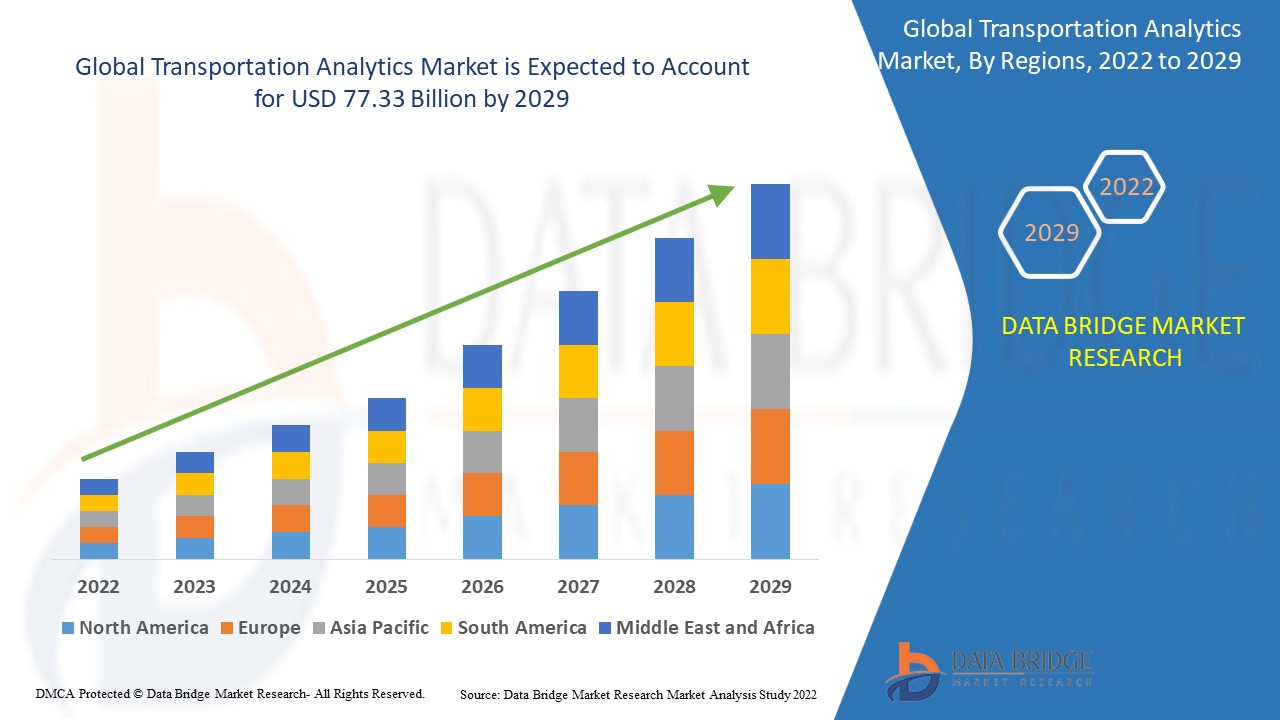Introduction
The transportation industry is undergoing a major transformation with the integration of artificial intelligence (AI). AI-driven transportation analytics is revolutionizing logistics, supply chain management, and urban mobility by optimizing routes and reducing operational costs. With the increasing demand for efficiency and sustainability, AI plays a crucial role in enhancing decision-making and improving the overall effectiveness of transportation networks.
Definition
Transportation Analytics refers to the use of data collection, statistical analysis, and advanced technologies such as artificial intelligence (AI) and machine learning (ML) to optimize transportation systems. It helps in improving traffic management, reducing congestion, enhancing safety, and streamlining logistics by analyzing patterns, predicting demand, and optimizing routes. This field plays a crucial role in urban planning, public transit efficiency, and supply chain management.
AI in Transportation Analytics
AI-powered transportation analytics utilizes machine learning, big data, and predictive analytics to analyze traffic patterns, vehicle movement, fuel consumption, and demand forecasting. By leveraging AI, companies and urban planners can make data-driven decisions to improve route optimization, minimize delays, and cut costs.
Predictive Analytics for Route Optimization:
AI algorithms process vast amounts of historical and real-time traffic data to identify congestion patterns, weather conditions, and road closures. By predicting traffic conditions, AI enables businesses and transportation providers to adjust their routes dynamically, ensuring faster and more efficient deliveries.
For instance, ride-sharing companies like Uber and Lyft use AI to analyze real-time traffic data and suggest the quickest routes for drivers. Similarly, logistics companies optimize delivery routes by integrating AI with GPS tracking systems to minimize fuel consumption and reduce transit time.
AI-Driven Fleet Management:
Fleet management has become more efficient with AI-powered analytics. AI helps companies track vehicle performance, fuel efficiency, and driver behavior. This real-time monitoring enables proactive maintenance, reducing unexpected breakdowns and improving vehicle longevity.
Moreover, AI-based telematics systems analyze driving patterns, alerting fleet managers about reckless driving behaviors such as harsh braking, rapid acceleration, and excessive idling. This not only improves safety but also helps reduce fuel costs by promoting efficient driving habits.
Autonomous Vehicles and AI Integration:
Self-driving vehicles rely heavily on AI for navigation, obstacle detection, and route planning. AI-powered sensors and cameras help autonomous vehicles interpret their surroundings, making real-time decisions to avoid traffic congestion and accidents.
Companies like Tesla, Waymo, and traditional automakers are investing in AI-driven automation to enhance vehicle safety and optimize routes. By reducing human intervention, AI-driven autonomous transport aims to lower labor costs, reduce accidents, and improve efficiency.
Cost Reduction Strategies Using AI
AI significantly contributes to cost reduction in transportation through various means, including:
Fuel Efficiency Optimization:
Fuel is one of the biggest expenses in the transportation sector. AI-powered fuel management systems analyze real-time fuel consumption patterns and suggest optimal driving behaviors to reduce waste. AI can also recommend alternative fuel routes that are cost-effective, helping companies save on expenses.
Dynamic Pricing and Demand Forecasting:
AI helps transportation companies adjust pricing dynamically based on demand fluctuations. Airlines, ride-sharing services, and freight carriers use AI-driven pricing models to set optimal fares, ensuring profitability while remaining competitive.
Additionally, AI’s predictive capabilities help businesses anticipate demand spikes, allowing for better resource allocation. For example, AI can predict high-demand periods in logistics and enable companies to plan additional shipments, reducing last-minute rush costs.
Reducing Downtime with Predictive Maintenance:
AI-driven predictive maintenance identifies potential issues in vehicles before they lead to costly repairs or service disruptions. By analyzing sensor data and vehicle diagnostics, AI can predict component failures and suggest maintenance schedules, preventing costly breakdowns and improving reliability.
This is particularly beneficial for large fleets, where unplanned downtime can lead to significant financial losses. Airlines, trucking companies, and public transportation agencies leverage AI-based predictive maintenance to enhance efficiency and reduce repair costs.
Enhancing Public Transportation with AI:
Public transportation systems are also benefiting from AI-driven analytics. Cities worldwide are adopting AI to optimize bus routes, subway schedules, and traffic signals. AI-based solutions improve passenger flow, reduce waiting times, and enhance overall transit experience.
Smart Traffic Management:
AI-powered traffic management systems use sensors and cameras to analyze congestion levels and adjust traffic signals dynamically. This reduces bottlenecks and enhances traffic flow, leading to improved fuel efficiency and reduced travel time for commuters.
Passenger Demand Prediction:
Public transit authorities use AI to analyze passenger travel patterns and optimize bus or train schedules accordingly. AI-driven models help predict peak travel times, allowing for better resource allocation and improved service efficiency.
Challenges and Future of AI in Transportation Analytics
Despite its benefits, AI-driven transportation analytics faces several challenges:
-
Data Privacy and Security: AI systems rely on vast amounts of data, raising concerns over privacy and cybersecurity risks.
-
Implementation Costs: Integrating AI into transportation networks requires significant investment in infrastructure and technology.
-
Regulatory Hurdles: Autonomous vehicles and AI-driven analytics must comply with evolving regulations and safety standards.
However, with continued advancements in AI technology, these challenges are expected to be addressed. The future of AI in transportation analytics looks promising, with ongoing innovations in machine learning, IoT integration, and automation further enhancing efficiency and cost-effectiveness.
Growth Rate of Transportation Analytics Market
According to Data Bridge Market Research, the size of the worldwide transportation analytics market was estimated at USD 28.48 billion in 2024 and is expected to grow at a compound annual growth rate (CAGR) of 22.10% from 2025 to 2032, reaching USD 140.73 billion.
Read More: https://www.databridgemarketresearch.com/reports/global-transportation-analytics-market
Conclusion
AI is revolutionizing transportation analytics by optimizing routes, improving fleet management, and reducing costs. With AI-driven predictive analytics, fuel efficiency optimization, and smart traffic management, businesses and public transportation systems can enhance operational efficiency and provide better services. While challenges remain, the future of AI in transportation holds great potential for transforming how people and goods move efficiently and cost-effectively.
Author
I have a passion for storytelling and a keen eye for detail, bringing over three years of diverse writing experience to various domains like Healthcare, Automobiles, Chemicals, ICT, FMCG etc.
